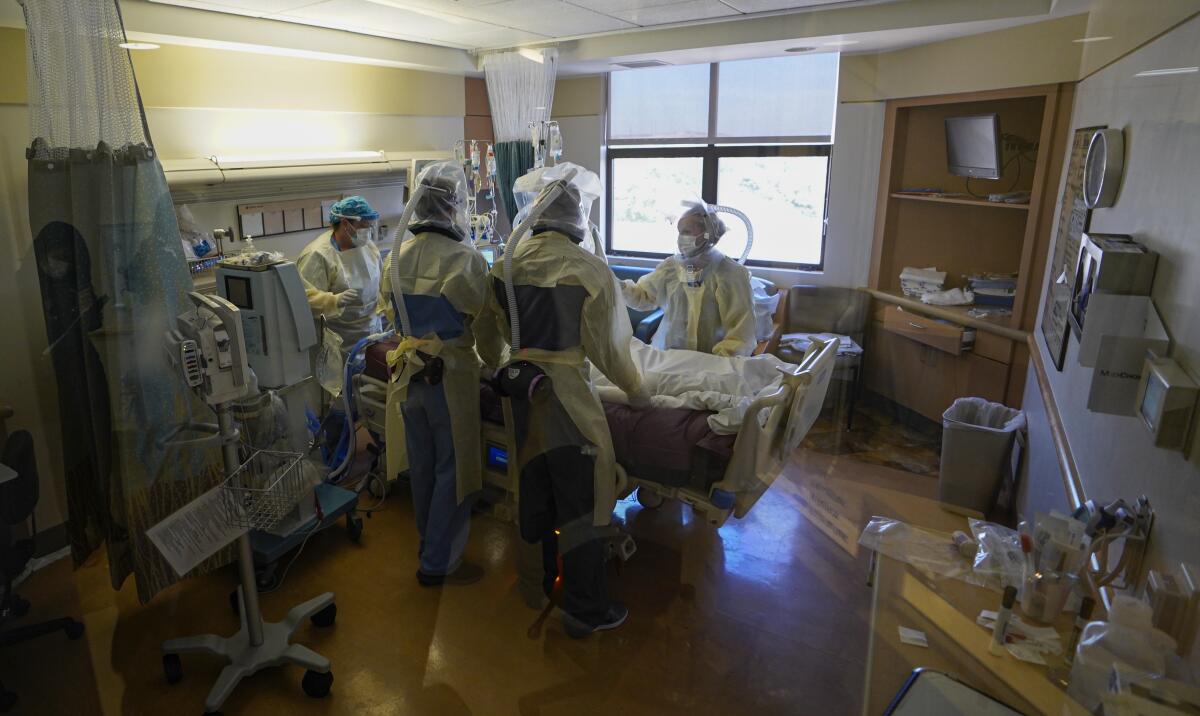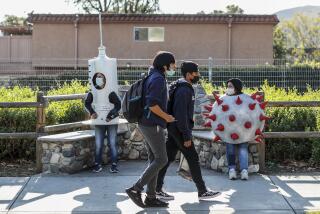California tops 10,000 coronavirus-related deaths

The death toll from the coronavirus in California surpassed 10,000 people on Thursday, a mark that underscores how a state that was once hailed as a pandemic success story is now struggling to slow outbreaks.
The surge of the coronavirus in California over the last two months had several causes, including the reopening of the economy that allowed COVID-19 to spread rapidly among low-wage workers, many of them Latino essential workers whose employers haven’t followed new infection control rules. But summer celebrations among young people is also a recurring problem, and one particularly frustrating to officials trying to slow outbreaks.
As of Friday morning, California had at least 541,494 confirmed cases and 10,028 deaths. California now has more cases than any other state, but the death toll is still well below that of New York, which has recorded more than 32,700 fatalities.
Los Angeles County has by far the most deaths in the state, with at least 4,869. On Thursday, the county hit another somber milestone, topping 200,000 total cases.
A big problem persists in agricultural areas of California, such as the Central Valley.
The eight-county San Joaquin Valley has seen hospitalizations increase 500% over the last two months.
There are some signs that the surge may be peaking in California on average, although it will take a few more weeks to know for sure.
A Los Angeles Times analysis on Monday found that California has now experienced its first weekly reduction in new confirmed coronavirus cases for the first time in 12 weeks. For the seven-day period that ended Sunday, California reported 59,697 new coronavirus cases, a drop of 9% from the previous week of 65,634 cases, which was a record.
If the trends continue, it would mark a turning point after weeks of record hospitalizations that began in mid-June, the result of California starting to rapidly reopen the economy in May.
But a serious breakdown in the electronic collection of coronavirus test data has raised questions about how accurate the numbers are, frustrating health officials. Some public health officials have resorted to counting results by hand, and a growing number of counties have warned the public that statistics provided by the state on infection rates are unreliable.
The ongoing technical problems with the electronic system for gathering and analyzing COVID-19 infection rates affect the state’s ability to track the spread of the virus and could be resulting in significant undercounts of infections across the state.
The data processing problem, however, has not affected the tracking of hospitalizations. And hospitalizations statewide have begun to improve.
California experienced its highest number of average daily COVID-19 hospitalizations about two weeks ago; the week of July 20, there were an average of 6,969 people in hospitals statewide. That number fell last week to 6,632. That improvement was the first time in 10 weeks California has seen such a reduction in average daily hospitalizations.
More to Read
Sign up for Essential California
The most important California stories and recommendations in your inbox every morning.
You may occasionally receive promotional content from the Los Angeles Times.














